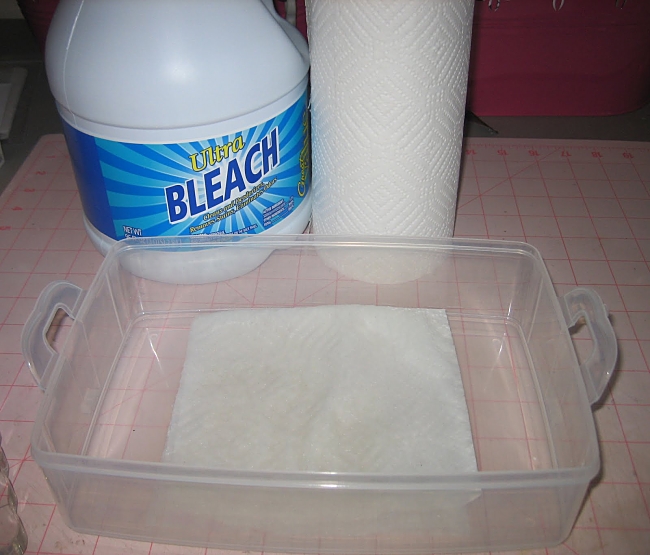Mold Remediation
Federated Environmental Remediates Mold Colony Infestations
When water damage occurs and mold remediation is necessary, Federated Environmental can provide valuable information that may help you avoid thousands of dollars in wasteful expense. Federated Environmental will perform a Mold Survey and collect interior and exterior air samples.
When the laboratory results are available, Federated Environmental will recommend a plan to reduce the likelihood of mold recurrence. Nearly 100-percent of the time, the property owner or manager can complete the needed work themselves. If needed, Federated Environmental can identify competent mold remediation companies for your project.
Shhh…industry secret revealed. Most mold remediation contractors use a carefully-guarded, secret, proprietary solution immediately lethal to mold colonies and bacteria. It’s called supermarket bleach. Mum’s the word, ok?
Mold Inspection & Survey Report and Its Contents
Federated Environmental’s Mold Inspection & Surveys begin with an interview about your concerns and details about your property. Important information about the property includes location, building configuration, number and location of HVAC systems, whether there is a basement or crawlspace, carpeting or hardwood floors and any unusual events such as musty odors, visible mold colonies, or water intrusion.
The most common cause of indoor odor is mold, yet amazingly neither mold nor mold spores themselves produce odors. The odor typically associated with mold growth are gases emitted when mold metabolizes (digests) the substrate or material it is growing on (wood fibers are preferred).
Federated Environmental’s Mold Inspector will make a physical site inspection to look for mold colonies and conditions that may give rise to mold colony growth. If observed, the Mold Inspector will collect samples to determine what genus mold is present, the aerosol mold and carpet dust spore count, and on other surfaces to develop a data pool about the property.
Each mold inspection report includes background information and a project summary, a quick guide to interpret the laboratory results, matrix chart(s) of laboratory results as compared to acceptable spore genera and spore counts, detailed discussions of sample locations, recommendations to reduce or eliminate mold growth as appropriate, protocols for maintaining indoor air quality, detailed information on the establishment of guidelines, and mold remediation recommendations. The laboratory results are included with the Mold Inspection & Survey report.
Mold Inspection Personnel Qualifications
Most states do not have any kind of mold inspection licensure. All Federated Environmental inspectors have Mold Awareness Training and have been trained in the proper collection, preservation, of mold samples as well as the interpretation of mold laboratory results. Moreover, Federated Environmental has on staff degreed geologists, biologists, chemists with over 100 collective years of experience in sample collection, physical site inspections, remediation training , and disaster recovery to provide specific recommendations and interpret results.
Laboratory Report Interpretation
The laboratory report form varies based on the kind of samples taken collected, e.g. air, carpeting, hard surface, etc. Airborne samples collected with a special vacuum pump taken during a typical interior mold survey include the type and quantity of particulates as well as both mold spores divided into outdoor, indoor/outdoor, and water damage spore types. Carpet dust analysis can provide mold genus and sometimes species, a history of intermittent events, and findings of yeast and other related organisms. Juxtaposing data and information from different sample types supports a comprehensive understanding of your indoor air quality relative to mold.
Mold Colonies Thrive in Warmth and Elevated Humidity: The Rule of 72
Mold odor is easily more noticeable when it is humid or after a rainfall…molds prefer humid conditions. Mold odors generally vary from dank to sweet to pungent and depend on the mold variety, the growth substrate or material the mold is growing on, and the ambient conditions. Mold colonies really start developing in force in about 72-hours when conditions are ideal. if you have a water release inside a building, get the area cool and dry as soon as possible to avoid mold growth. Under most circumstances, if building materials are thoroughly dried within 72-hours, mold growth and damage will be limited. The longer building materials are water logged or moist, the more likely you are to find mold genera such as Stachybotrys (black mold).
Mold Colonies are Commonly Hidden But Reveal Themselves By Making a Stink
Mold colonies can be insidious and well-hidden. Mold -produced gases pass easily through many materials, and as such, hidden mold colonies can generate detectable odors from within walls, air plena, HVAC systems, floor drains, and other areas. Federated Environmental has a range of testing methods to identify normally hidden mold colonies including the taking of air samples behind walls to determine mold species and airborne spore counts. Mold type and airborne spore counts offer clues to the cause of the mold growth and can be used to eliminate mold growth.
